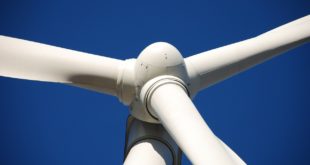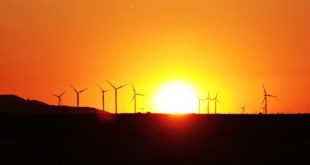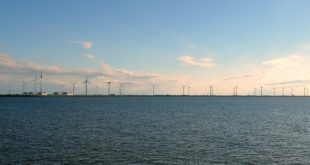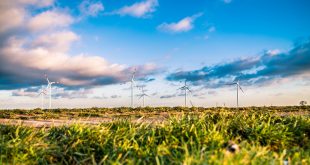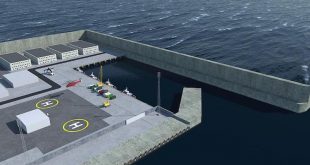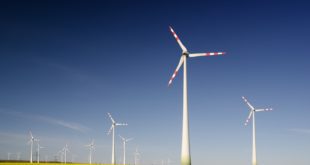American wind power has blown through an historic milestone: 50 gigawatts of electric generating capacity, according to the American Wind Energy Association (AWEA).
Denise Bode, CEO of AWEA, made the announcement at the recent National Clean Energy Summit in Las Vegas.
The 50 gigawatts (GW) online means that U.S. wind turbines now power the equivalent of nearly 13 million American homes, or as many as in Nevada, Colorado, Wisconsin, Virginia, Alabama, and Connecticut combined. In addition, 50 gigawatts (GW) of wind power capacity:
• Represents the generating power of 44 coal-fired power plants, or 11 nuclear power plants.
• Avoids emitting as much carbon dioxide as taking 14 million cars off the road.
• Conserves 30 billion gallons of water a year compared to thermal electric generation, since wind energy uses virtually no water.
“This milestone for wind-energy production marks continued success for this clean, renewable and domestically produced energy source,” said Sen. Chuck Grassley, who has been called the Father of the Production Tax Credit. “Wind energy has exceeded expectations since I first authored the tax incentive, in 1992, and offers an ideal for expanded production and use of alternative energy sources in the future.”
Among the projects that contributed to crossing the threshold of 50 gigawatts (equal to 50,000 megawatts) are projects newly connected to the power grid in Nevada, Oklahoma, Idaho, California, Hawaii and Iowa. Featuring turbines made by General Electric, REpower, Siemens and Vestas, they include:
• Pattern Energy’s Spring Valley wind farm, 30 miles east of Ely, Nevada (151.8 MW)
• Enel Green Power North America’s Rocky Ridge wind farm in Oklahoma (148.8 MW)
• enXco’s Pacific Wind project in Kern County, California (140 MW)
• Utah Associated Municipal Power’s Horse Butte project in Idaho (57.6 MW)
• First Wind’s Kaheawa Wind II wind farm in Hawaii (21 MW)
Utility-scale wind farms are now located in 39 states, increasing the economic as well as environmental benefits around the country.
Both American wind development and the capacity of a typical turbine have taken off in recent years. Although utility-scale wind generation dates to the early 1980s, it took 23 years to reach 5 GW of U.S. generating capacity (from1981 to 2003).
American wind power reached 10 GW in 2006, 25 GW in 2008, and now has doubled that in just four more years. The last time a new energy technology ramped up to 50 GW was nuclear, in the late 1970s and early 1980s. Since then, no new energy technology has been as successful as wind.
With the growth of capacity has come higher domestic content in U.S.-deployed wind turbines, which surged from 25 percent U.S.-made in 2005 to over 60 percent today, with a steadily increasing number of factories joining the supply chain here. Today, 500 U.S. factories provide wind power components.
http://www.altenerg.com/xpress/2012/september/INstory1.htm
 Alternative Energy HQ solar power for homes, wind energy, and bio fuel issues
Alternative Energy HQ solar power for homes, wind energy, and bio fuel issues


